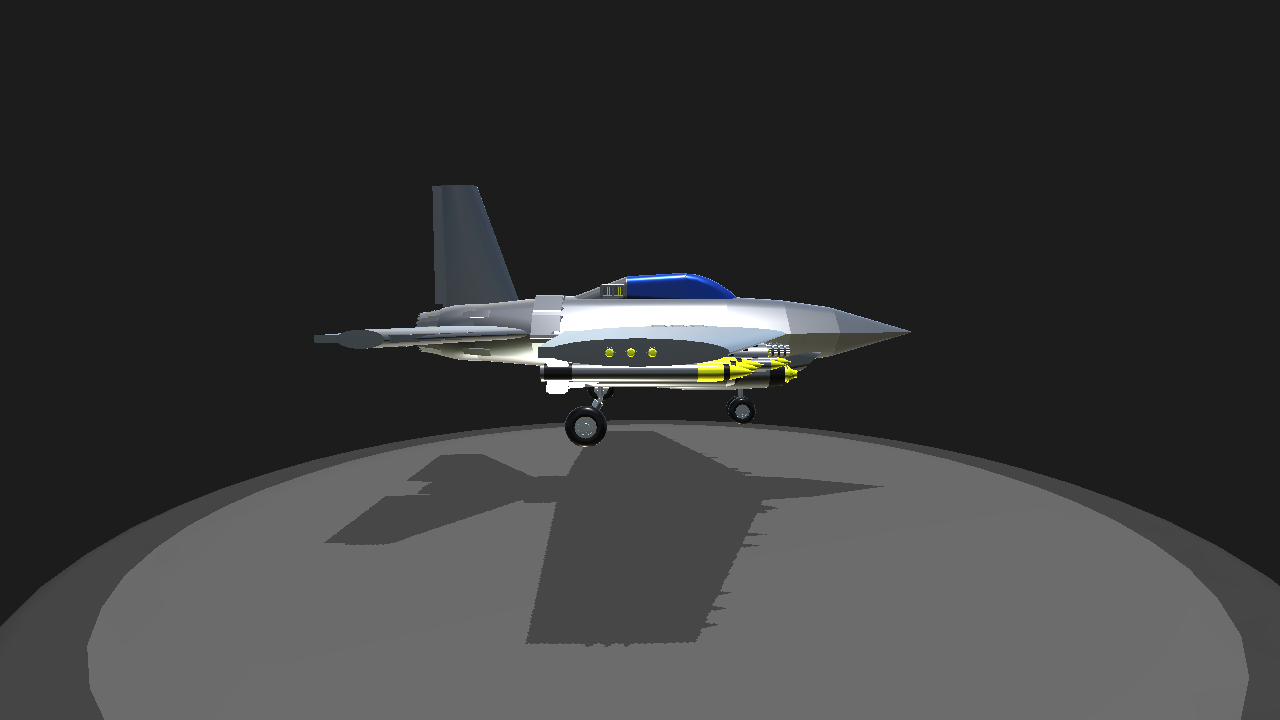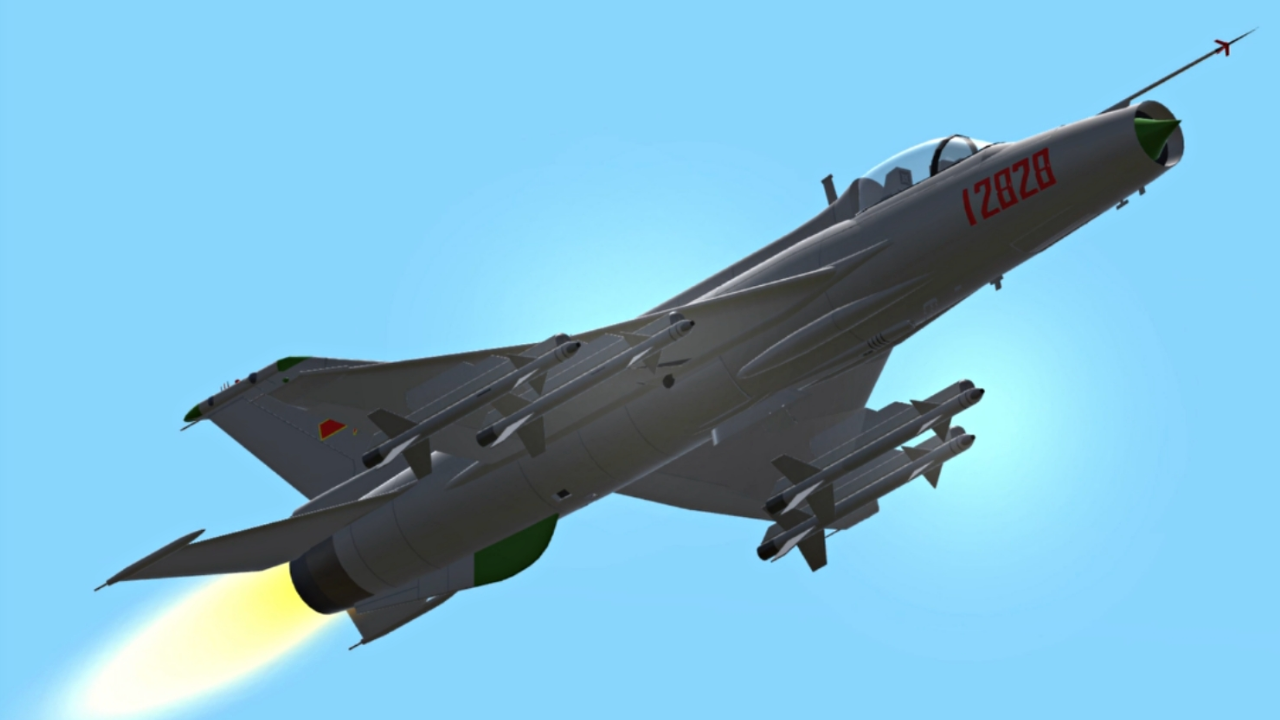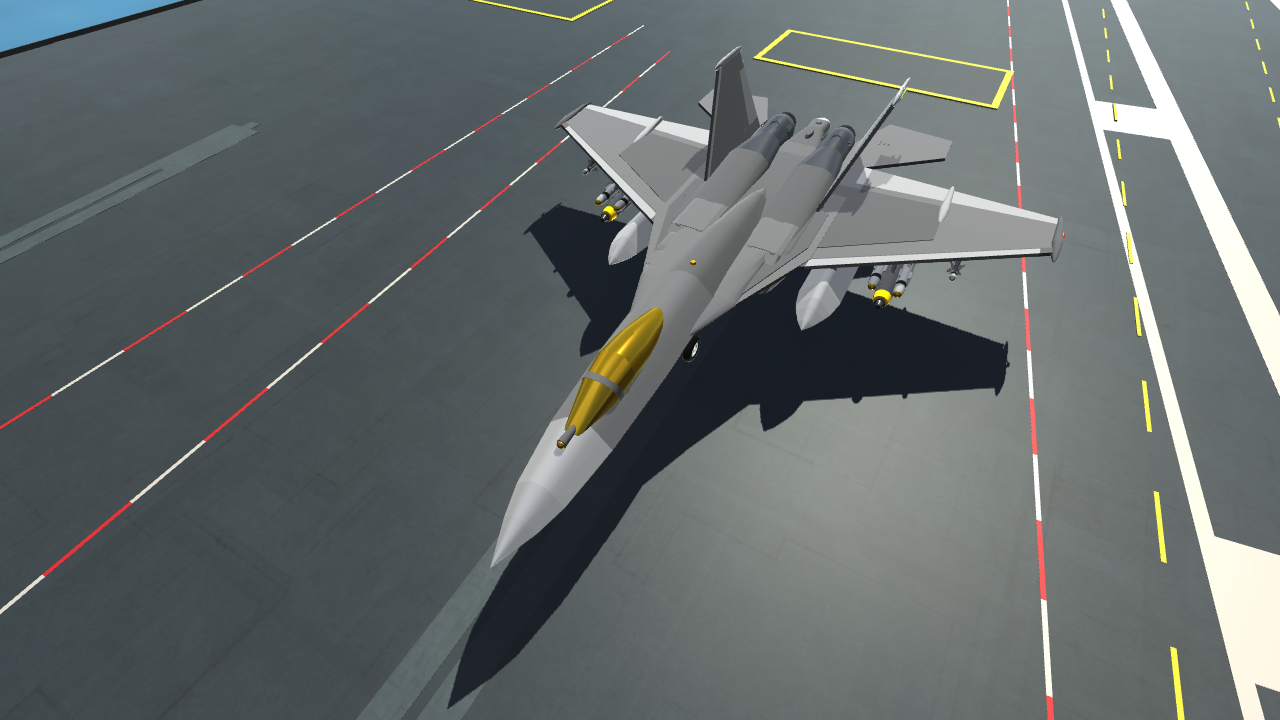

Integration of the BOL countermeasures dispensers into the outboard pylons as a mission configuration option. Upgraded AN/ALE-47 countermeasures dispenser.Integration of latest standoff weaponry, as well as AIM-120 AMRAAM.Reduced approach speed and better slow-speed control.Bring-back to ship capacity increased from 9k lbs to 16k lbs.Enlarged and extended slats on wing leading-edge.Ability to carry 425-gallon external tanks on nacelle hardpoints if it was developed.Wet wing pylons capable of carrying 300-gallon external tanks.Expanded range and capabilities over the original AN/APG-71 in F-14D, which itself was an outgrowth of the AWG-9. AN/APG-71 radar with additional upgrades ported over from the AN/APG-70 used on the F-15E.On-Board Oxygen Generations System (OBOGS).New mission computers and graphics processors. Wide-angle raster-scan HUD capable of projecting FLIR imagery.Single-piece windscreen for enhanced visibility.Underfuselage-mounted Ford Aerospace (now Lockheed Martin) Night Owl targeting pod/FLIR and navigation pod.Enlarged and recontoured leading-edge gloves with an additional 2,200lbs of fuel storage each.Some state M1.2-1.4 supercruise would have been possible. This 29K pound thrust class engine, a modification of the same variant found in later block F-16s and now some Strike Eagle derivatives, albeit with a longer exhaust pipe tailored to the Tomcat, would give the ST21 supercruise performance (>Mach 1 without the use of gas-guzzling afterburner) while carrying a relevant air-to-air loadout. So, Grumman came back to the Navy with a true "Super Tomcat," called the Super Tomcat 21. Also, rumors that an inexpensive clean sheet next-generation Hornet design was in the works over at McDonnell Douglas did not help Quick Strike's attractiveness. Quick Strike was aimed more at cheaply picking up the Intruder's slack than at replacing the A-12's high-end capability, and was seen at the time as an insufficient technological leap over the F-14B and D models already in service.
#Simpleplanes fighter jet upgrade
Quick Strike was meant to be an upgrade for existing F-14s by giving them high-end navigation and targeting pods similar to the USAF's LANTIRN system, along with upgraded ground attack modes for F-14D's APG-71 Radar (based on the aircraft's original AWG-9 radar) and the ability to carry more standoff weaponry like the AGM-84E SLAM and AGM-88 HARM.

The Super Tomcat 21 grew out of a previous proposal made by Grumman after the collapse of the A-12 program called Quick Strike.

Yet in some people's opinion, it worked for the wrong aircraft. In the end, this "low-risk" and familiar design concept worked via the eventual development and procurement of the F/A-18E/F Super Hornet. The hope was that if aircraft manufacturers make an almost entirely new aircraft look like an existing type, while also giving them a familiar "evolutionary" designation, Congress would see the product as a low-risk, low-cost upgrade of a proven platform and thus move forward with its procurement.Īt the same time the NATF program (the Navy's equivalent to the USAF's Advanced Tactical Fighter program) was in the works, but the costs and timeline for its development would have been massive, and in light of what happened to the stealthy A-12 "Flying Dorito," it was clear that something simpler was needed. With the A-6E TRAM Intruder's retirement imminent and in the vacuum created by the canceled A-12 program, manufactures starting throwing out "logical growth" designs based on existing platforms. The "peace dividend" sentiment was on the rise and defense budgets were beginning to fall. Congress had been talked into high-risk, hugely aggressive defense programs for decades and they had had enough. This was back in 1991, the Cold War had just ended and we just got done kicking the ass of one of the world's largest standing armies. After massive cost overruns, weight increases and huge delays, then Defense Secretary Dick Cheney axed the stealthy carrier-borne flying wing attack jet leaving a huge hole in NAVAIR's future inventory. In our reality, the F/A-18E/F Super Hornet became the Navy's vanguard fighter of the 21st century as a result of the boondoggle that was the A-12 Avenger program.


 0 kommentar(er)
0 kommentar(er)
